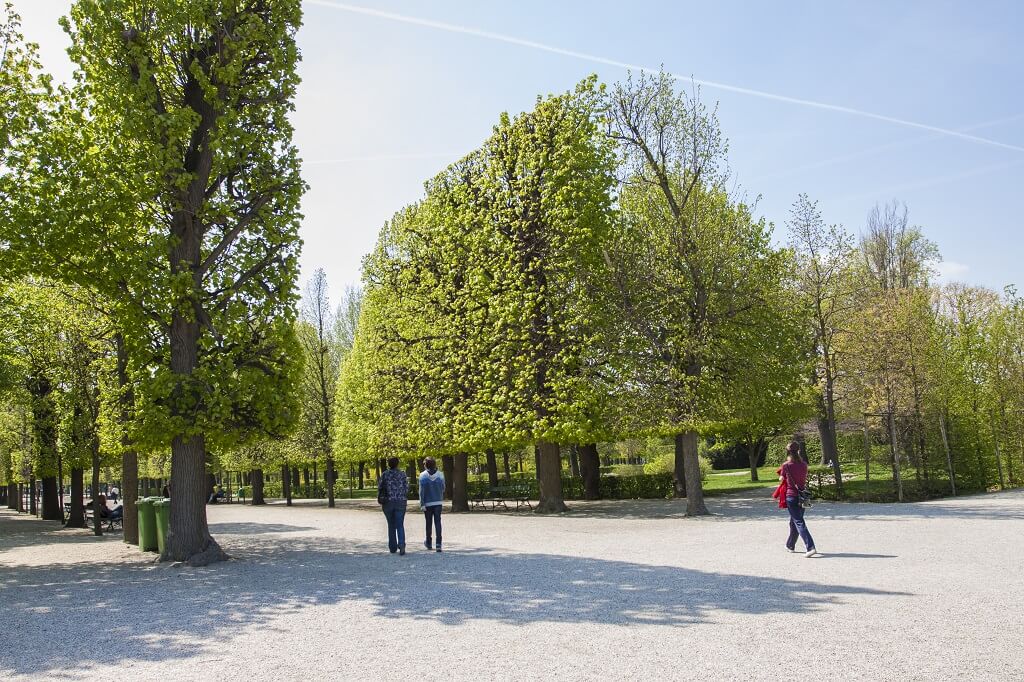While the City of Troy contemplates what might be developed on the Troy Civic Center, developers have already suggested that it would be a great place for a Dave & Buster’s, or we might tear down Troy City Hall and replace it with a shopping plaza on Big Beaver.

This is not what the City Council or the Troy Planning Commission envisions for what they now reference as Troy Town Center. Both entities see it as a mixed-use, walkable community with homes, parks, some retail and just a bit of office so your accountant, doctor or lawyer could have an office close by. Work on the proposed plans began last fall, and the idea was presented to the nation’s shopping center developers at their annual convention in New York in December, with good results.
At the convention, the city learned that the developers know Troy and that they are “enthusiastic about Troy” and think it’s “a great city,” reported Troy City Manager Brian Kischnick.
Councilmembers and planners got an update last Monday on the proposed plans from Robert Gibbs, president of Gibbs Planning Group in Birmingham and a renowned urban designer who has been responsible for some of the most successful urban developments in the country. Now the question they had to ask themselves: Where do we go from here?
First, Gibbs assured the group that the five civic buildings on the site stay and will be part of proposed plazas and parks. The plan also calls for 180,000 sq. feet of retail, including a food market. While the land could accommodate 286,000 sq. feet of retail, this is seen as too dense for our roads. There would be 10,000-20,000 sq. feet of office as well as parks, a public square and plazas. There is also room for 300-room hotel and space by a lake for a future 60,000 sq. foot building. Gibbs noted he’s been told this is exactly the size the library would like to be one day.
And there would be residential housing too. There would be 25 cottage homes that could be between 1,200 and 3,000 square feet, 100 townhouses, and 725 mid-rise multiple homes, some built over the retail space. “The more people who live here, the more secure it is,” Gibbs told the officials. He also noted that these homes should be built to the very highest standards.
One big change would be the location of the Troy Aquatic Center, which would be moved to Huber Park, which has deed restrictions that call for it to remain a recreation site. Huber would come with landscaping and paved paths.
The focal point of the Troy Town Center would be a 90- foot wide town square surrounded by flowering chestnut trees, with the retail and housing along its edges. If you know what Cranbrook’s square looks like you’ll have an idea of what’s envisioned here.
Restaurants are also considered a necessary ingredient to an urban living area. So is a market where residents can get the essentials.
Who might want to live at the Troy Town Center? Well, there are 14,000 folks over 65 years of age, with 20,000 Troy households which have to school-age kids, 2,400 young people on their own between 20 and 34 (who love to walk) and 1,300 residents without a car. These seniors and millennials are the prime audience for such a development.
Matthew J. Farrell, CEO/CoFounder of CORE Properties, talked about what it takes to make such a development sustainable. The civic center has a land value of $29 million and the city owns it. When built out the value is estimated to be $360 million, with a taxable value of $35-$36 million. That’s not to say Troy wouldn’t have to contribute to the project. There would have be roads put in, or upgraded, and there’s no lake on the property at present. Upgrades to civic buildings could be done over time, too.
What to do next?
Councilwoman Edna Abrahim said she would like to see the plans shown to the public for community feedback. (It was noted that the plans have already had three public presentations and been presented to focus groups and changes have been made.) But we’ll probably get another chance to see them very soon. But Gibbs warned that to be successful it was important to “stick to the grid,” as it is presented.
One thing noted by the audience, in this case Larry Keisling, the city’s former planning director, was that when they go to developers it should be made very clear what the developer would be expected to pay for and what costs would be the city’s responsibility.
All agreed, however, it was time to ask the developers for a request for quotation (RFQ) to find out who might be interested in building the Troy Town Center.


